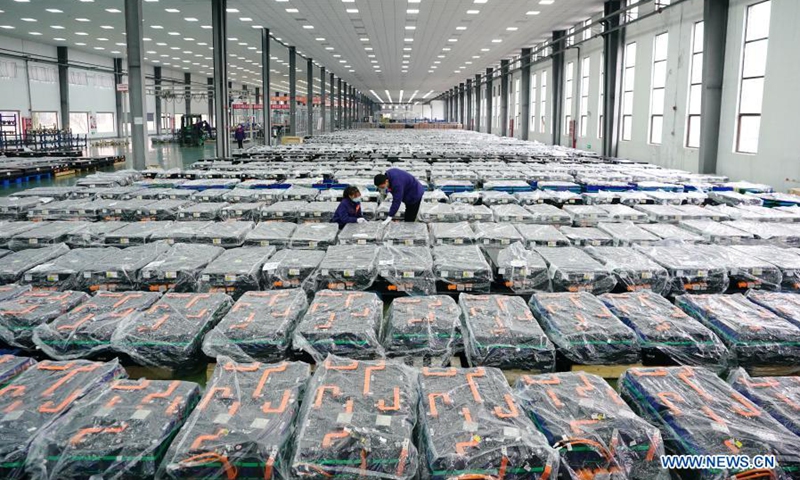
Workers check battery products at a lithium battery factory in Tangshan, north China's Hebei Province. (Xinhua/Yang Shiyao)
Australia's total lithium concentrate exports saw a year-on-year increase of 15 percent in the first five months of 2022, with China accounting for 96 percent of the total, amid strong demand for the raw material as it consolidates its new-energy vehicle (NEV) industry and takes measures to meet carbon emissions reduction goals.
Industry insiders predicted that China's imports of Australian lithium will further expand in the rest of the year, ignited by the resilient and interdependent supply chain. However, many express hope for improved relations between China and Australia.
Wu Yanhua, secretary-general of the Lithium Industry Branch of the China Nonferrous Metals Industry Association (CNIA), told the Global Times on Wednesday that the growth in Australia's lithium exports to China is within expectation as there is a strong interdependent connection between China and Australia in the raw material trade, reflected by the explosive growth and great potential throughout the downstream market.
From January to June, China's domestic production of NEVs reached 2.661 million, an increase of 1.2 times year-on-year, while the market share for NEVs reached 21.6 percent, achieving the 20-percent goal by 2025 ahead of schedule, industry data shows.
China's dependence for lithium resources rely heavily on imports, with 65 percent of the total consumption comes from overseas, and Australia takes a major portion, data from Lithium Industry Branch shows.
As the production capacity of Australian lithium increases and the domestic consumption grows, the imports will definitely on the rise for the rest of the year, Wu said.
In response to the growing demand from China's downstream producers, Australian's export of spodumene, an important source of lithium, to China saw a significant 14.9 percent year-on-year jump, reaching 906,000 tons, from January to May, according to Australian trade data.
Due to strong demand from Chinese clients, the average price of spodumene in Australia rose to $2,873 per ton in May, up 541.3 percent year-on-year and 43.2 percent month-on-month, according to media reports, even as the weak global economic recovery lingers.
The strong lithium trade is also a reflection of the interdependent ties between China and Australia, despite bilateral trade tensions.
It is true that China significantly relies on Australian lithium, but China also has the competitive advantages in the proceeding and refining of lithium, which forms the closely integrated industry chain in between, that Australia may not live without, Wu said.




